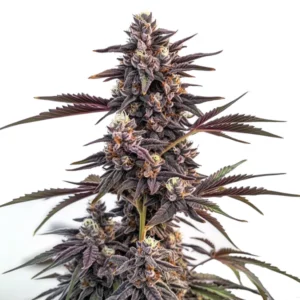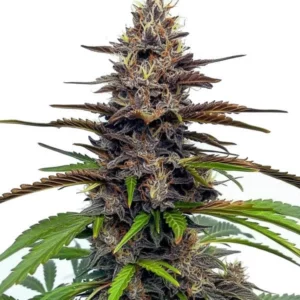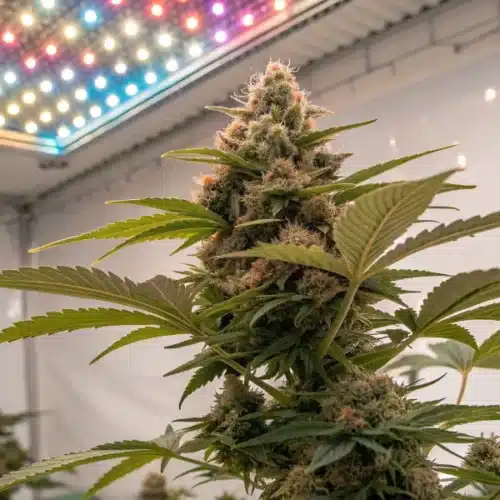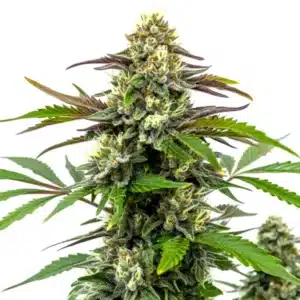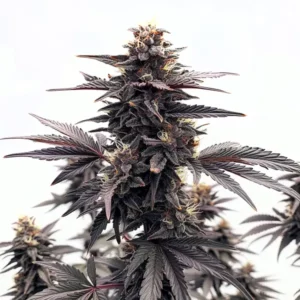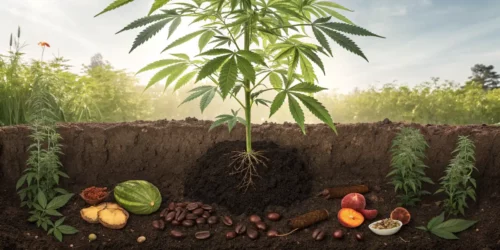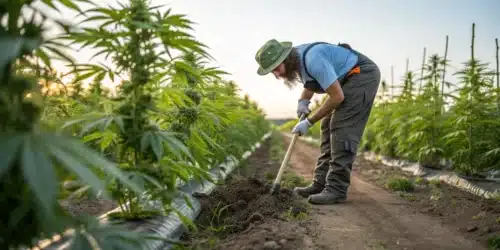Many growers, both first-time seed buyers and experienced cultivators, are always on the hunt for natural, cost-effective ways to improve the health and yield of their cannabis crops. One solution that is gaining popularity is using coffee grounds for marijuana plants. This method is easy, inexpensive, and can deliver impressive results.
The benefits of coffee grounds for marijuana plants are many. They provide essential nutrients, improve soil structure, and help to control pests. And the best part? You can start using them right now, with the leftover grounds from your daily cup of joe.
Coffee grounds for marijuana plants is a resourceful way to utilize kitchen waste and promote sustainability. This natural fertilizer not only aids in the growth of marijuana plants but also reduces the need for chemical fertilizers, promoting an eco-friendly approach to cannabis cultivation. Moreover, coffee grounds enhance the physical properties of the soil, improving its water-holding capacity and overall fertility.
It’s worth noting that the effects of coffee grounds on marijuana plants are not instantaneous. It’s a gradual process, as the coffee grounds decompose over time, slowly releasing nutrients into the soil. Therefore, patience is key when using this method. As the grounds break down, they continually boost the nutrient content of the soil, providing a long-term supply of essential nutrients for your marijuana plants.
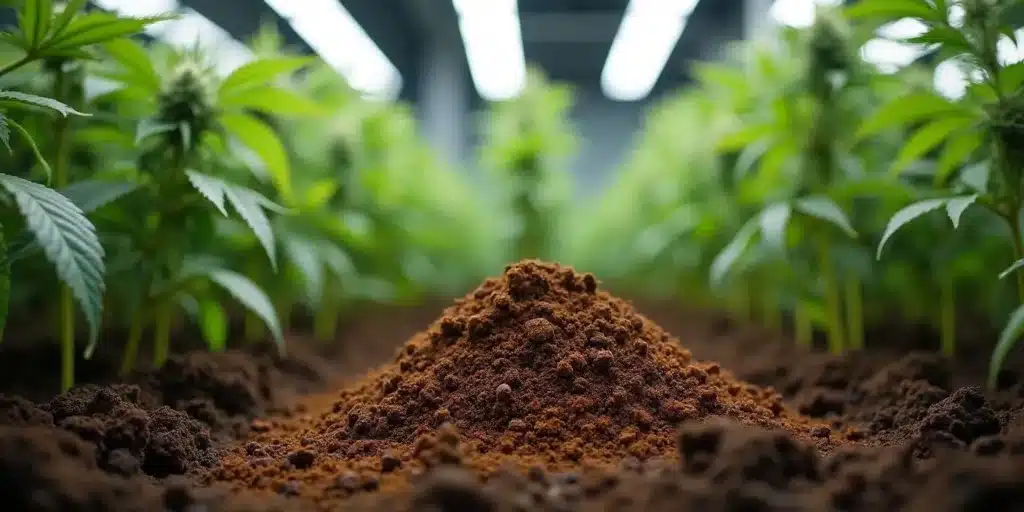
Why Use Coffee Grounds for Cannabis Growth?
The primary reason growers turn to coffee grounds for marijuana plants is their rich nutrient content. Coffee grounds are packed with nitrogen, a vital nutrient that cannabis plants need for healthy growth. They also contain smaller amounts of phosphorus and potassium, two other key nutrients for plant health. These three elements together make up the N-P-K ratio that you’ll see on most commercial fertilizers.
Another reason to use coffee grounds in your cannabis soil is to improve its structure. Coffee grounds can help to loosen compacted soil, improving drainage and aeration. This can help your marijuana plants to establish a healthy root system, which is essential for nutrient uptake and overall growth.
But that’s not all. The benefits of coffee grounds for marijuana plants extend beyond nutrient provision and soil improvement. Coffee grounds also have pest-deterrent properties. Many common garden pests don’t like the smell or taste of coffee, so adding grounds to your soil can help to keep these pests at bay. This can reduce your reliance on chemical pesticides, making your cannabis cultivation process more natural and eco-friendly.
Also, using coffee grounds in marijuana plant soil can enhance microbial activity. The organic matter in coffee grounds serves as food for beneficial soil microorganisms. These microbes help to break down the coffee grounds, releasing nutrients in a form that cannabis plants can absorb. Plus, a thriving microbial population can outcompete harmful pathogens, helping to protect your plants from diseases.
Promos & Deals
How to Use Coffee Grounds as Fertilizer for Marijuana Plants
Using coffee grounds in marijuana plant soil is straightforward. Simply mix the grounds into your potting soil or compost before planting. Aim for a ratio of about 10-20% coffee grounds by volume. This will provide your plants with a good dose of nutrients without overwhelming them or altering the soil pH too drastically.
Another method is to use coffee grounds as a mulch. Simply spread a thin layer of grounds on the surface of your soil. This can help to retain moisture, control weeds, and deter pests. Plus, as the coffee grounds break down, they’ll continue to release nutrients into the soil.
If you’re wondering how to use coffee grounds for cannabis growth, it’s essential to consider the type and size of your plantation. For small, indoor cannabis plants, mixing grounds into the potting soil works best. For larger, outdoor plantations, using coffee grounds as mulch might provide more benefits. Remember, moderation is key. Overdoing it could lead to soil acidity issues and potential plant damage.
Furthermore, coffee grounds as fertilizer for marijuana plants could be mixed with other organic materials like compost or worm castings to create a rich, nutrient-dense soil blend. This approach can provide a more balanced nutrient profile, benefitting your cannabis plants’ overall health and growth. However, always ensure to monitor your plants’ response closely when introducing any new element to their environment.
What Strains Benefit Most from Coffee Grounds?
While all cannabis plants can benefit from the nutrients provided by coffee grounds, some strains may thrive more than others. For example, the OG Kush strain from Blimburn Seeds, known for its heavy yields and high THC content, can thrive with the added nitrogen from coffee grounds, aiding in the development of its dense, resinous buds.
The Chemdog #4 strain, another popular choice from Blimburn Seeds, is known for its robust growth and resilience. The added nutrients and improved soil structure provided by coffee grounds can help this strain to reach its full potential.
It’s important to remember that while some strains may respond more positively to the addition of coffee grounds for marijuana plants, the overall health and quality of your plants will depend on a variety of factors. These include the quality of your soil, the light and temperature conditions, and your care and attention. Always monitor your plants closely to ensure they’re receiving the right balance of nutrients and care.
Also, bear in mind that different strains of marijuana plants have different nutrient requirements. Therefore, while coffee grounds can provide a general boost, you might need to tailor your fertilization strategy to the specific needs of your strains. This could mean supplementing with other organic or commercial fertilizers to ensure your plants get the right balance of nutrients.
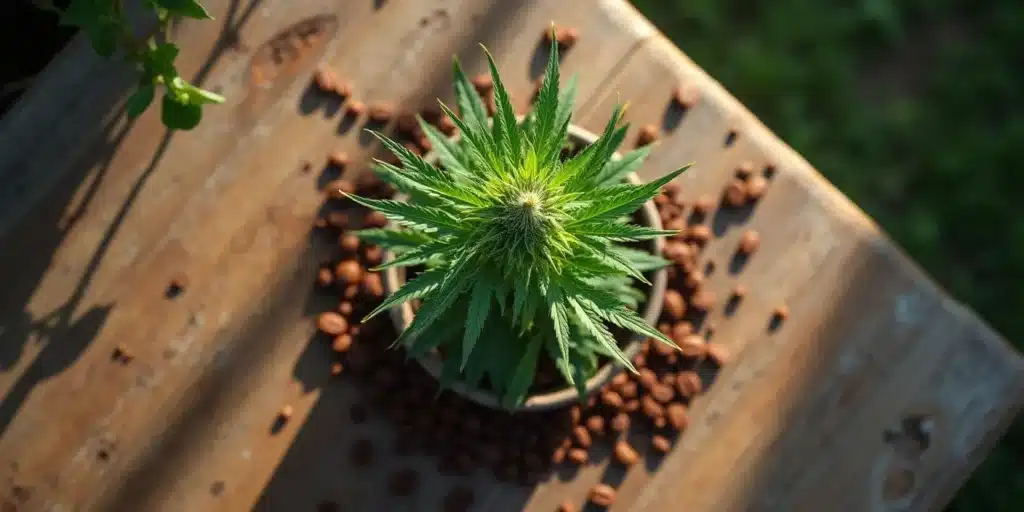
Are There Any Downsides to Using Coffee Grounds?
While the benefits of coffee grounds for marijuana plants are clear, it’s also important to be aware of potential drawbacks. One issue to consider is the pH of your soil. Coffee grounds are acidic, and while cannabis plants prefer slightly acidic soil, adding too much can lower the pH too much, potentially harming your plants.
Another possible downside is that coffee grounds can compact over time, especially when used as a mulch. This can lead to poor drainage and aeration, which can harm your plants. To avoid this, be sure to mix the coffee grounds well into your soil or compost, and avoid using a thick layer of coffee grounds as mulch.
It’s also crucial to remember that the effects of coffee grounds on marijuana plants can vary depending on the specific growing conditions. For instance, in a wet and humid environment, coffee grounds might mold, attracting unwanted pests. Also, in an overly acidic soil, adding coffee grounds might worsen the situation. Therefore, it’s essential to evaluate your plants’ specific needs and growing conditions before introducing coffee grounds.
Lastly, while using coffee grounds in marijuana plant soil can provide some essential nutrients, it’s not a complete fertilizer solution. Coffee grounds lack certain essential nutrients like calcium and magnesium. Therefore, you may need to supplement your plants with other fertilizers or organic materials to ensure they’re getting a balanced diet. Regular soil testing can help you monitor nutrient levels and make necessary adjustments.
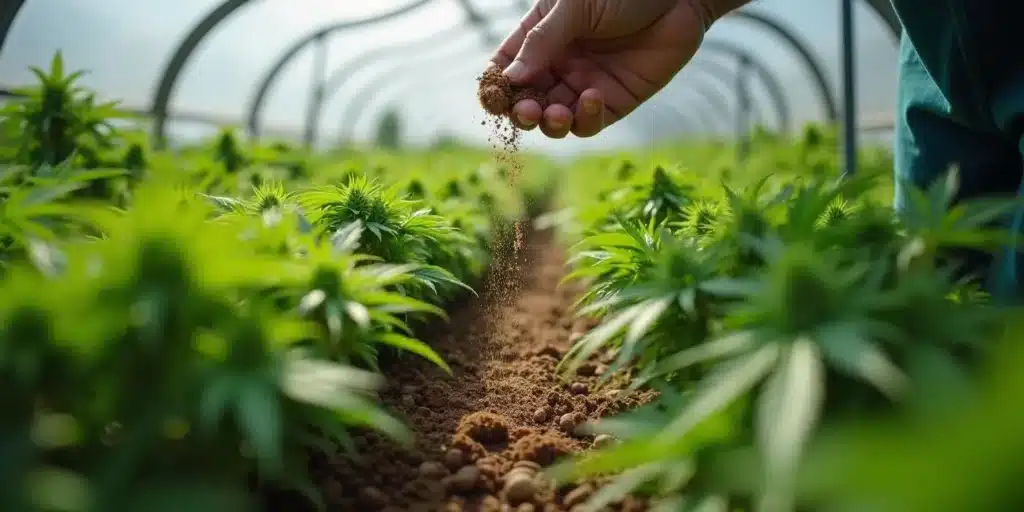
Frequently Asked Questions
Can I use coffee grounds from any type of coffee?
Yes, you can use grounds from any type of coffee for your marijuana plants. However, it’s best to stick with regular, non-flavored coffees as flavored coffees may contain additives that could harm your plants. Also, keep in mind that different types of coffee may have different nutrient contents.
As for the preparation method, both drip and espresso grounds can be used. Just make sure the grounds are cool and dry before adding them to your soil or compost. This will help to prevent mold and other potential issues.
It’s also worth mentioning that coffee grounds from organic coffee can be a better option for your marijuana plants. Organic coffee is grown without the use of synthetic fertilizers or pesticides, so the grounds are less likely to contain chemical residues that could harm your plants. Plus, organic coffee grounds may have a more balanced nutrient profile, providing additional benefits to your plants.
However, it’s advisable to avoid using coffee grounds from decaffeinated coffee. Decaffeinated coffee undergoes a chemical process to remove caffeine, which may leave behind residues that could be harmful to your plants. Therefore, when choosing coffee grounds for marijuana plants, opt for regular, caffeinated coffee for the best results.
Can I use coffee grounds for indoor plants?
Yes, you can use coffee grounds for both indoor and outdoor marijuana plants. For indoor plants, you might find it easier to mix the coffee grounds into your potting soil or compost before planting. Remember to use a ratio of about 10-20% coffee grounds by volume.
For outdoor plants, you can either mix the grounds into the soil or use them as a mulch. Just be aware of the potential downsides of each method and adjust your approach as needed.
When using coffee grounds for indoor marijuana plants, be cautious about potential pests. Indoor plants are more vulnerable to pests like fungus gnats, which thrive in damp, organic matter. To prevent this, ensure your coffee grounds are dry before adding them to your soil and avoid over-watering your plants. Regularly inspect your plants for any signs of pest infestation and take immediate action if needed.
For outdoor plants, coffee grounds can serve as an excellent soil amendment, improving soil structure, and nutrient content. Outdoor plants have a higher nutrient demand due to their larger size and faster growth rate, making coffee grounds a beneficial addition. However, keep in mind that outdoor plants are exposed to more environmental factors, so regular monitoring and care are essential despite the use of coffee grounds.
How often should I add coffee grounds to my soil?
There’s no one-size-fits-all answer to this question, as it depends on factors like the current nutrient content of your soil and the specific needs of your cannabis strains. However, a good rule of thumb is to add coffee grounds every few weeks or so.
Remember, it’s always better to start small and add more as needed. Too much of any nutrient, even a natural one like coffee grounds, can harm your plants. Monitor your plants closely and adjust your coffee ground application as needed.
When starting to use coffee grounds for marijuana plants, it’s advisable to begin with a smaller amount, observe how your plants respond, and gradually increase the amount if necessary. If you notice your plants are thriving, you can maintain the same application frequency. However, if you spot signs of distress, such as yellowing leaves or stunted growth, it might be a sign to cut back on the coffee grounds or adjust your overall fertilization strategy.
Also, remember that the nutrient needs of marijuana plants can change throughout their life cycle. During the vegetative stage, cannabis plants need a lot of nitrogen, which coffee grounds can provide. However, during the flowering stage, the nutrient demand shifts, and phosphorous becomes more important. So, you might need to adjust your use of coffee grounds and other fertilizers based on your plants’ growth stage.
What are the signs that my plants are benefiting from coffee grounds?
Healthy, thriving cannabis plants will have bright green leaves, strong stems, and robust growth. If you’re using coffee grounds as a fertilizer, you might notice improved growth and vigor, larger yields, and healthier foliage.
On the other hand, if your plants are getting too much of a good thing, you might notice signs of nutrient burn, like yellowing or browning leaves. If this happens, cut back on your coffee ground application and consider flushing your plants with clean water to remove excess nutrients.
Positive signs that your plants are benefiting from coffee grounds include better water retention in the soil, fewer pest problems, and improved soil structure. Moreover, you might notice your plants displaying vibrant foliage and robust growth, indicating they’re receiving adequate nutrients. The ultimate proof, of course, would be a successful harvest with high-quality buds.
On the contrary, signs of excess might include leaf discoloration, slow growth, or wilting. If your plants show signs of stress or nutrient burn, it might be because of adding too many coffee grounds. In such a case, you should reduce the amount of coffee grounds you’re using and monitor your plants closely for recovery.
Can coffee grounds attract pests?
While it’s true that certain pests, like snails and slugs, are deterred by coffee grounds, others, like fungus gnats, might be attracted to them. However, this is usually only a problem if the coffee grounds are kept damp and moldy. To prevent this, make sure your coffee grounds are dry before adding them to your soil, and avoid over-watering your plants.
Remember, using coffee grounds is just one part of a comprehensive pest management strategy. You’ll still need to monitor your plants closely for signs of pests and take action as needed.
It’s crucial to remember that while coffee grounds can deter some pests, they’re not a silver bullet for all pest problems. Cannabis plants can be susceptible to a variety of pests, and each requires a different management strategy. Therefore, while using coffee grounds can be a part of your pest management plan, you should also be prepared to use other organic or chemical pest control methods as necessary.
Furthermore, coffee grounds might attract certain beneficial insects, like earthworms, to your garden. These creatures aid in nutrient cycling and soil aeration, promoting healthier plant growth. Therefore, while it’s crucial to watch out for potential pest problems, don’t overlook the potential benefits of attracting helpful garden critters with your coffee grounds.


